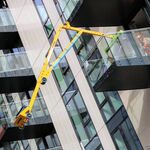micheal_can
Senior Member
Would Ontario Northland be a possible solution to the issues of congestion in the park and around it? Their routes already go through this area so it wouldn't be a huge increase in logistics or capacity to introduce that to the route. Although it would add about 1.5 to the total route time. Increase the frequency in the summer to allow for additional trips to Algonquin park to reduce the number of people who are using their personal vehicles to get to these areas. That would allow for people in Toronto and other areas to be able to get to that area without the need for a vehicle and could maybe increase the revenue for Northland as an operation.
Huntsville has a transit service although I am sure that it's limited in the scale and scope. A fee of some type for users of the park or funding from the province could be implemented, provided to Huntsville to run a bus to the campground every so often to provide services so park users don't need to go into town with their own vehicle. It's not a short distance by any means of 66 km one way, but if you could use a bus service to bring you into town to party on a Friday or Saturday night and then back to your campsite without the concern of driving then I'm sure that would have some pull.
Is the other option a move to a booked time option? Bruce Peninsula National Park uses a time slot approach where you have to book your time allowed inside of the park in advance. Allowing for only 4-hour timeslots to reduce the number of people who are inside the park at a time. Obviously, it would take some political will to do so but that could be another option for reducing how many day travelers there are and vehicles within the park facilities itself.
Queen Elizabeth II is the wildlands park. As mentioned before it is fully natural with limited to no facilities or amendments to the natural space. Areas, where they consider to be 'camping', are rocks or flat spaces. Someone asked the question earlier about it.
In theory, if ON Bus were utilized right, it could be used. They would need to have some sort of operations centre local as the drivers would eat a lot of time to go back to North Bay.
Going to a reservation system for the trails may mitigate the issue. The politics are much different as BP is a federal and Algonquin is provincial.




